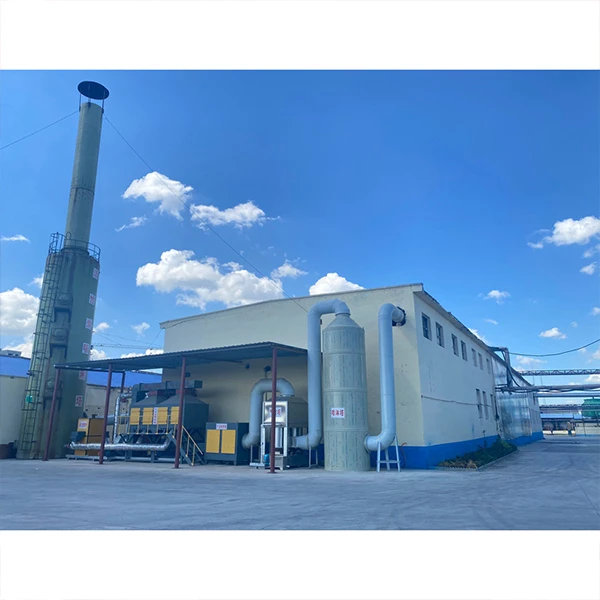Understanding Cellulose Esters A Focus on Hydroxypropyl Methylcellulose (HPMC)
Cellulose is one of the most abundant organic polymers on Earth, primarily derived from plants. Its versatile properties have led to its modification in various forms to serve different industrial and pharmaceutical applications. Among these derivatives, Hydroxypropyl Methylcellulose (HPMC) stands out for its unique characteristics and functionality. This article delves into the composition, properties, uses, and advantages of HPMC, shedding light on its significance in both the pharmaceutical and food industries.
Composition and Structure
HPMC is a semi-synthetic, non-ionic polymer derived from cellulose through chemical modification. In the production process, cellulose is treated with propylene oxide and methyl chloride, incorporating hydroxypropyl and methyl groups into the cellulose backbone. This modification enhances the solubility of cellulose in water and introduces various functional properties that are not present in native cellulose.
The degree of substitution of hydroxypropyl and methyl groups can be controlled during synthesis, allowing manufacturers to tailor HPMC's properties for specific applications. The resulting product is a white to off-white powder that is odorless and tasteless, making it an ideal ingredient in many formulations.
Properties of HPMC
HPMC exhibits a range of beneficial properties
1. Solubility HPMC is soluble in cold water, forming a viscous gel-like solution. This is particularly advantageous in applications where a stable suspension is required.
2. Thickening and Binding It serves as an effective thickening agent, providing desirable viscosity and texture in products such as paints, food, and cosmetics.
3. Film-forming Ability HPMC can create a flexible, transparent film, which is useful in drug delivery systems and coating applications.
5. Biocompatibility Non-toxic and biocompatible, HPMC is safe for use in pharmaceutical and food products, offering peace of mind to consumers.
cellulosa esther (hpmc)

Applications of HPMC
HPMC is extensively utilized in various industries
1. Pharmaceuticals One of the major uses of HPMC is in the pharmaceutical industry. It is commonly employed as a binder and film-coating agent in tablet formulations. Its ability to control the release of active ingredients makes HPMC an essential component in sustained-release drug formulations.
2. Food Industry In food applications, HPMC serves as a thickening agent and emulsifier. It is often found in gluten-free baked goods, dairy products, sauces, and dressings to improve texture and stability. Its high viscosity provides a mouthfeel that enhances consumer acceptance.
3. Construction The construction industry utilizes HPMC as a water-retaining agent in cement-based formulations such as mortars and tile adhesives. Its thickening properties improve workability, making it easier to apply.
4. Cosmetics and Personal Care HPMC is widely used in the cosmetic industry for its ability to improve the consistency and texture of creams, lotions, and gels. Additionally, it can enhance the viscosity of liquid soaps and shampoos.
Advantages of HPMC
The advantages of HPMC over other thickening and binding agents include its versatility, ease of use, and compatibility with a range of other substances. Its non-ionic nature means that it does not interfere with the ionic activities of other ingredients, making it a go-to option for formulators looking for stability and performance.
Moreover, the flexibility in modifying its properties through varying degrees of substitution allows for customized formulations tailored to specific industries or applications. This adaptability ensures that HPMC remains relevant in an ever-evolving market.
Conclusion
Hydroxypropyl Methylcellulose (HPMC) is an exemplary cellulose derivative with a broad spectrum of applications across diverse industries. Its unique properties, combined with its biocompatibility and stability, make it an invaluable ingredient in pharmaceuticals, food products, cosmetics, and construction. As researchers continue to explore and expand the potential uses of cellulose derivatives, HPMC is poised to play a pivotal role in innovative formulation practices, further cementing its relevance in modern science and technology.
-
Rdp that The Revolutionary Polymer Powder Transforming Modern Construction MaterialsNewsAug.11,2025
-
Hpmc Powder that Versatile Additive for Detergents and Personal CareNewsAug.11,2025
-
Hpmc Hydroxypropyl Methylcellulose that Essential Building Material Additive from Shijiazhuang Gaocheng YongfengNewsAug.11,2025
-
Hydroxypropyl Methyl Cellulos Hpmc that Essential for Construction ApplicationsNewsAug.11,2025
-
Mhec Powder that Revolutionizing Construction Chemistry with Cellulose Ether SolutionsNewsAug.11,2025
-
Industri Hpmc that The Global Backbone of Advanced ConstructionNewsAug.11,2025




